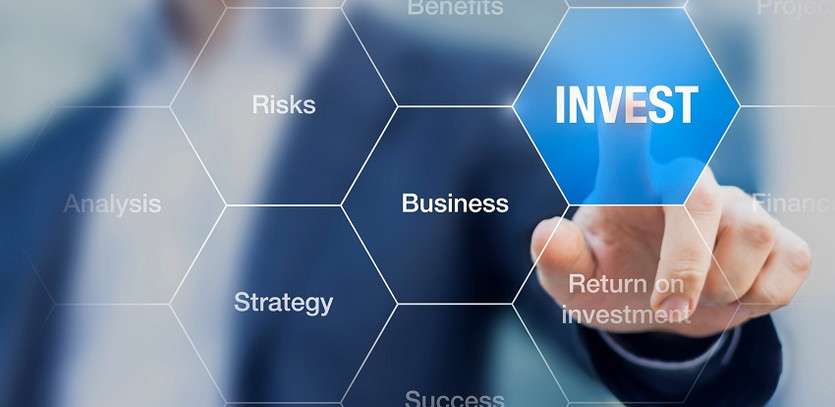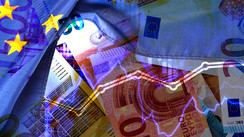At the beginning of 2022, prices were spiking higher in the U.S. thanks to pandemic supply chain breakdowns and consumer bank accounts stuffed with cash. Remote work seemed here to stay and unemployment was near all-time lows. For many, there was a real sense that the pandemic economic crisis was behind us.
Not every observer was so sanguine, however, and it didn’t take long for runaway inflation to become a major headache for markets and regular Americans.
After some hesitation (remember transient inflation) the Federal Reserve pledged to crush rising prices by hiking interest rates. The stock market tanked, taking bonds along for the ride, making it a miserable year for investors.
With 2022 drawing to a close, the S&P 500 has clawed its way out of bear market territory but remains down 17% as of this writing. As we look ahead to 2023, here are nine investing trends that can help parse the cautionary tales from the opportunities.
1. America Remains an Inflation Nation
Inflation was the economic glitter of 2022—it stuck to everything. From the gas pump to the grocery store to your 401(k), investors have higher costs and less valuable dollars to invest in the future.
The big question for 2023 is whether inflation will drop toward the Fed’s 2% target rate. Many experts suggest that’s unlikely, although it’s worth noting that the Fed’s six 2022 rate hikes will take a while to work their way through the economy.
Morningstar predicts that the Fed will ease monetary policy and lower interest rates to roughly 3% by the end of 2023. If that happens, it won’t help the inflation fight. That suggests that Treasury Inflation Protected Securities (TIPS) and I bonds should remain popular inflation-fighting investments.
2. The Bear Market Could Stick Around
The Covid-19 stock market rocketship crashed and burned. June 2022 ushered in the second bear market since 2020, sending investors scrambling for cover.
While stocks have officially emerged from the bear market in the second half of 2022, stock markets remain down by double-digits.
Ordinarily, bonds would take the edge off a bear market. However, aggressive interest rate hikes have bond yields falling along with stock prices. In the third quarter of 2022, the venerable 60/40 portfolio suffered greater losses than its stocks-only counterpart, causing questions about whether the O.G. portfolio needs to go.
Improving investor sentiment will likely be tied to easing inflation, so the year ahead could prove tricky for traditional asset allocation models.
While putting a “buy low” mantra into heavy rotation on your morning meditation playlist is never a bad idea, 2023 may prove that buy-and-hold investors need more than equities and fixed income to hedge against unpredictable markets.
3. Consider Alternative Investments
Speaking of broader diversification, 2023 holds promise for alternative investments finally earning a place in everyday investor portfolios.
The portfolio for 2023—no matter your net worth, risk tolerance, or time horizon—should include an increased allocation to alternatives. With their low correlation to traditional asset classes like stocks and bonds, alternatives could blunt inflation- and recession-induced volatility and buoy returns more than dividend stocks alone.
Previously reserved for accredited investors and seasoned traders, everyday investors can easily access alternative asset strategies like commodities and managed futures through a decent selection of low-cost exchange-traded funds (ETFs) and mutual funds.
While expense ratios trend higher than the average fund, the performance of alternative assets may outweigh the higher costs.
4. Savings Bonds Are Still Sexy
If there’s a silver lining to the inflationary cloud, it’s the newfound popularity of savings bonds—specifically Series I savings bonds. In April 2022, the I bond rate jumped to a historic high of 9.62%, contrasting the S&P’s year-to-date 15% decline.
Investors eager to lock in that phenomenal rate bought $979 million in I bonds on Friday, Oct. 28—the last purchase day before the semiannual rate reset—and crashed the Treasury Direct website. You’d think the U.S. Treasury was selling Taylor Swift concert tickets.
For those seeking alpha for their extra cash, I bonds at the lower (yet still phenomenal) 6.89% rate are available through April 30, 2023. While illiquid for one year after purchase, it’s tough to argue with a guaranteed rate of return backed by the full faith of Uncle Sam.
5. Watch Out for Layoffs
The hashtag of the year on social media could be #layoff. Since mid-November, tens of thousands of employees have been laid off from tech behemoths like Meta, Amazon, Lyft and Twitter.
While boldface tech names have seen very high-profile waves of labor force reductions, other industries have seen their own losses. Real estate startups like Better, Redfin and Opendoor have slashed headcounts as rising rates and home prices dried-up mortgage applications, closed sales and corporate revenues.
As cash-strapped public companies try to shore up their balance sheets ahead of a potential recession, the year ahead could see the undoing of the historically strong U.S. labor market. While experts predict that new college grads won’t be at a loss for job offers, entry-level positions have less impact on corporate bottom lines.
That mid-career—especially in tech-centric specialties—could weigh on unemployment figures. Companies seeking to whittle payroll may pursue leaner staffing protocols, leaving plenty of talent on the sidelines to appease shareholders.
6. Can Crypto Recover?
It is pretty easy to argue that 2023 has to be a better year for crypto than 2022 since it could hardly be worse.
Multiple stablecoins slipped their pegs in 2022—including TerraUSD and Tether, fueling a midyear crypto crash that wiped out hundreds of billions in value. Crypto exchanges, meanwhile, were hobbled by growing pains and layoffs (Coinbase)—not to mention the sudden implosions of FTX.
Moving into 2023, look for cryptocurrency businesses to woo investors with stories of cash reserves instead of trendy coins and celebrity endorsements. And look for big developments in cryptocurrency regulation from Washington, D.C.
The Fed launched its 12-week central bank digital currency (CBDC) proof-of-concept project in mid-November, and legislators remain excited to advance crypto regulation legislation.
Unfortunately, many blockchain conversations will likely be colored by the debacle at FTX instead of the technology’s long-term, untapped potential.
7. New Interest in Renewables
The landmark $1.2 trillion infrastructure bill of 2021 and the Inflation Reduction Act of 2022 make trillions of federal investments available for renewable energy projects.
While supply chain issues stymied clean energy developments from electric vehicles (EVs) to solar panels over the last two years, 2023 could be a very good year for renewables.
With battery storage and EV adoption inextricably intertwined, BDO Global predicts a banner year for renewable energy storage systems. Increased competition in the EV market from newcomers like Rivian, Lucid, Ford and Chevy could put mainstays like Toyota and Tesla on their heels.
And natural gas shortages stemming from European Union conflicts have increased policy momentum for clean and renewable sources.
8. Hybrid Robo-Advisors May Have a Moment
Recent data from Parameter Insights show that investors exited self-directed investment tools like robo-advisors and brokerage accounts at a staggering pace in 2022. Theories on the exodus abound, but two lead the charge: Wealthier investors may be flocking to traditional financial advisors, and DIYers may be content to wait out a market recovery with cash in hand.
No matter the reason, hybrid robo-advisors—those that offer algorithm-driven investing plus access to traditional advisors—may be teed up for a lot of interest in 2023.
With consumers demanding more value for their money during inflationary times, the low-cost/expert advice behind hybrid robos hits the zeitgeist. By offering a combination of services like automatic rebalancing and tax-loss harvesting with financial advisor access, and at a fee typically lower than traditional advisors—
Price-sensitive economies make investors more value-driven than ever, which positions hybrid robos as the best of both worlds for investors eager for guidance but anxious about costs.





